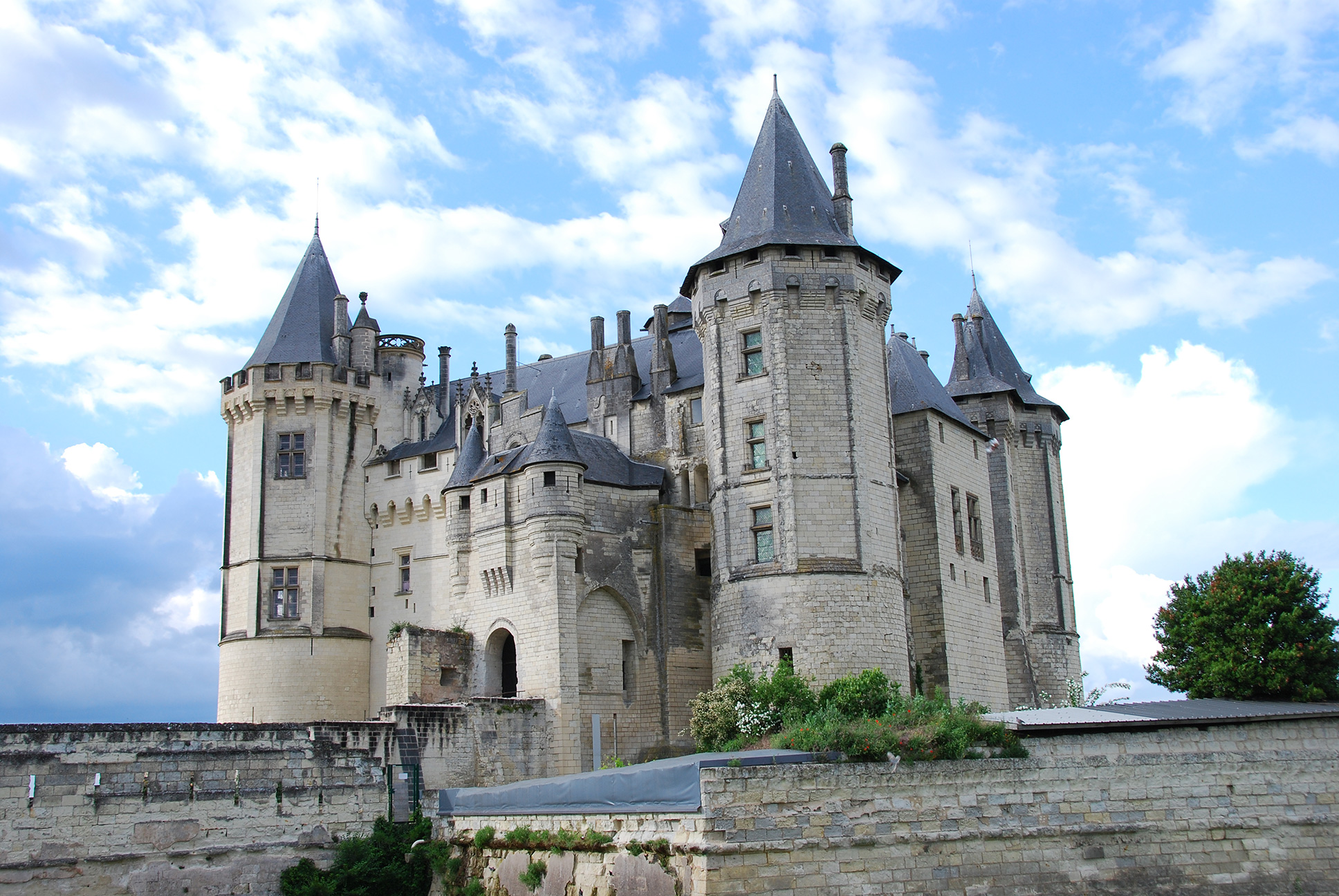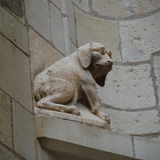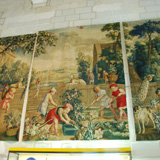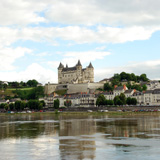History
In approximately 956, Theobald I, Count of Blois, constructed a Benedictine Abbey to hold relics of Saint Florent, an Anjou evangelist, who died in 360. To protect the relics and the abbey itself from the Counts of Anjou, a fortified stronghold, Château de Saumur, was constructed in 962.

In 1026, the rivalry between the Counts of Blois and Anjou climaxed when Fulk Nerra seized the castle and abbey. Thereafter, the buildings were set ablaze, and the monks, faithful to the Count of Blois, were ejected from the castle. Throughout the remainder of the 11th century, Château de Saumur was controlled by the Counts of Anjou. In 1067, the structure was once again destroyed by fire. Afterward, a keep was constructed in its place in the 12th century.
Before leaving for the Holy Land in 1119, Fulk V arranged for the marriage of his son, Geoffrey, to Empress Matilda, daughter of the King Henry I of England. Geoffrey, who was called Plantagenet for the yellow flower he wore, became the Count of Anjou at the age of 16 in 1129. The son of Geoffrey and Matilda eventually became King Henry II of England, as well as Count of Anjou. Henry II, his wife Eleanor, and their sons, Richard (the Lionheart) and John, often visited Saumur. In 1188, Henry held his Christmas court at the castle.
In 1203, King Phillip Augustus of France seized the keep and took control of Château de Saumur. Subsequently, it was fortified with four drum towers connected by curtain walls. Approximately a quarter of a century later, in 1230, as Henry II withdrew to England, Louis IX of France retook the city of Angers in the Loire Valley, and Anjou, including Château de Saumur, was reintegrated into the French royal property.
During the Hundred Years' War, Louis I of Anjou performed upgrades to the castle, rivaling his brothers' architectural projects, King Charles I and the Dukes of Berry and Burgundy. In 1368, initial work began with the construction of the north wing along the banks of the Loire River. It included a great stateroom and chapel. Lead for roofing was attained from the Château d'Angers, Chinon, and Loudon. In 1380, the Romanesque tower was mostly demolished before the west tower and wing were constructed. In addition, the south wing and new châtelet entrance were added towards the end of the 14th century, which completely enclosed the quadrilateral castle.
In 1793, the army of the Vendee ransacked the castle after seizing it. The damage was so severe that in 1797, the army prepared plans for its demolition. As Napoleon Bonaparte passed through Saumur in 1808, he decided to convert the castle into a state prison, saving it from ruin. The castle was drastically altered as large windows, staircases, and passages were sealed to create 745 cells across the three wings of the structure. State prisoners held in Saumur were freed during the Bourbon Restoration.
In 1815, Château de Saumur changed ownership to the French Minister of War, who designated its use as an arms and ammunition dump. Its use as a place of refuse remained unchanged until 1889. In 1906, the town of Saumur purchased the castle back from the state to serve as a municipal museum. Subsequent renovation work was carried out, including restoring rooms to their original sizes, reopening staircases, fireplaces, and windows, and adding sculpted décor. In June 1940, the castle's north wing was severely damaged when more than 100 shells struck it during the Battle of Saumur in World War II. Not until more than half a century later, in 1997, did the final restoration begin on the south wing, west tower, and dormer windows.
Castle Highlights
Château de Saumur resides majestically above the Loire River in the town of Saumur. Its white stone, medieval drum towers with machicolations, and blue-colored roof convey a sense of power and romance directly from a fairytale. I highly recommend planning some time to study the inner courtyard walls, as there are numerous sculptures of animals to discover along the walls that would probably get overlooked when casually walking through the area.
The castle is open to the public, and you may explore its interior at your own pace or as part of a guided tour that explores most rooms while providing informative history. Moreover, an extensive collection of decorative ceramics, tapestries, and various equestrian-related artifacts adorn the castle. Saumur is famous for its horses, equestrian center, and military cavalry school.
To supplement your visit to Château de Saumur, I suggest you drive over the bridge and Loire River to get magnificent views of the castle and town from the opposite bank.


